Fall armyworm natural enemies
Cotesia icipe (Hymenoptera: Braconidae)
Fall armyworm (FAW), scientifically known as Spodoptera frugiperda (J. E. Smith) (Lepidoptera: Noctuidae) is a highly polyphagous pest that utilizes maize, sorghum and other cereals as its primary host. The native range of FAW includes the Neotropical and the Nearctic regions. It was first detected in Africa in 2016. The pest’s enormous ability to migrate has resulted in its rapid spread to over 100 countries in Africa, the Near East and the Asia pacific region. FAW has become a major threat to food security in the global south, due to its ability to devastate maize and other cereal crops that many depend on for food and income. In the invaded zones, several indigenous natural enemies have been observed to attack FAW and these are emerging as key regulatory factors in controlling the pest. In Africa, over 30 indigenous parasitoid species that attack fall armyworm have been identified in 17 countries.
Cotesia icipe (Hymenoptera: Braconidae), a larval parasitoid of fall armyworm observed in Benin, Cameroon, Ethiopia, Ghana, Kenya, Tanzania and Zambia. Prior to the fall armyworm invasion, Cotesia icipe was recorded parasitizing the cotton leafworm, Spodoptera littoralis (Boisduval), another polyphagous and widely distributed pest in Africa. With the invasion of fall armyworm in Africa, researchers in icipe and other organisations have reported that Cotesia icipe parasitizes the first, second and third larval instars of fall armyworm. Under favourable conditions as observed in Ethiopia, more than 45.3% parasitism by Cotesia icipe has been recorded.
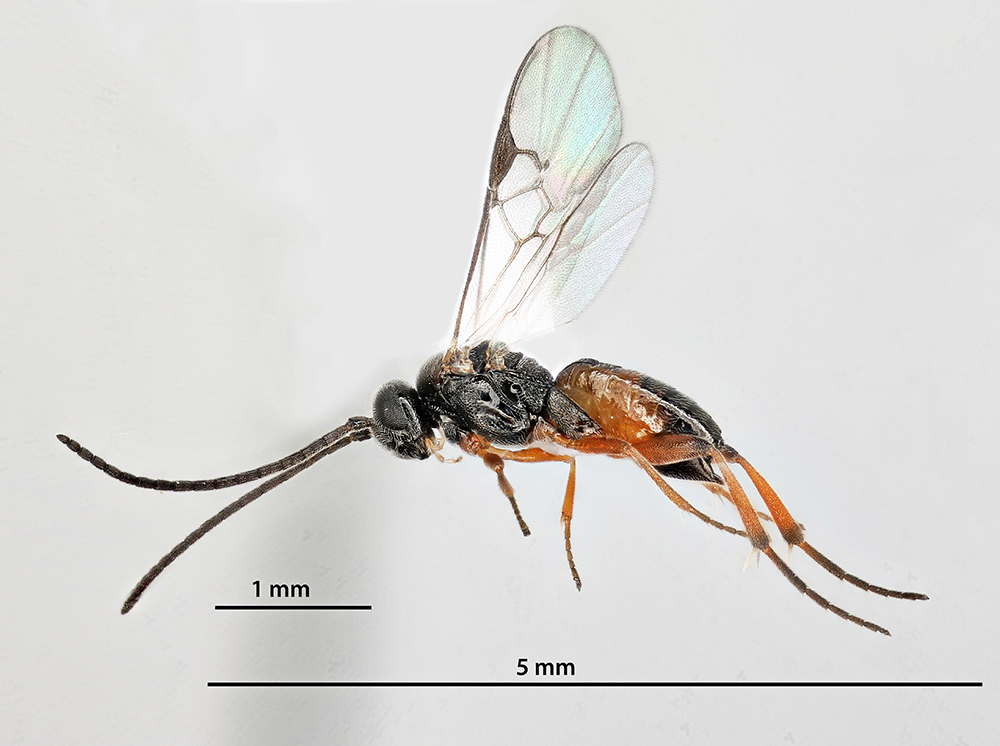
Photo credit: icipe
Telenomus remus (Hymenoptera: Scelionidae)
Among all the life stages of fall armyworm, Spodoptera frugiperda (J. E. Smith) (Lepidoptera: Noctuidae), the adults and egg stages are the most appropriate to target or control to significantly reduce the damage caused by the pest. Habitat management strategies, such as push-pull developed by icipe targets the adults and inhibits them from laying eggs on maize/cereals. Biological control options such as biopesticides and egg parasitoids are effective for management of eggs and early instars of the pest. Among the several natural enemies of FAW already found in Africa, researchers have identified a very effective egg parasitoid, Telenomus remus (Hymenoptera: Scelionidae), which is the photographic highlight of the day.
Telenomus remus, a native parasitoid of Spodoptera litura, from Malaysia and Papua New Guinea, was introduced to many countries for management of diverse armyworms, such as Spodoptera littoralis in Africa and Spodoptera frugiperda in the Americas. Large scale augumentative releases in South America led to 90% parasitism of FAW, reducing pesticide spraying by more than 40%. This parasitoid is already reported from Benin, Cameroon, Côte d’Ivoire, Ghana, Kenya, Niger, Nigeria, Uganda, South Africa, Tanzania and Zambia. Outside Africa, T. remus has been reported to parasitize Fall armyworm in China, India, Indonesia, and Nepal. It can contribute up to 64% parasitism of eggs of fall armyworm in sub-Saharan Africa. In Africa, icipe and the Plant village Dream team focus on engaging youths in gainful employment for mass production and augumentation of Telenomus remus.
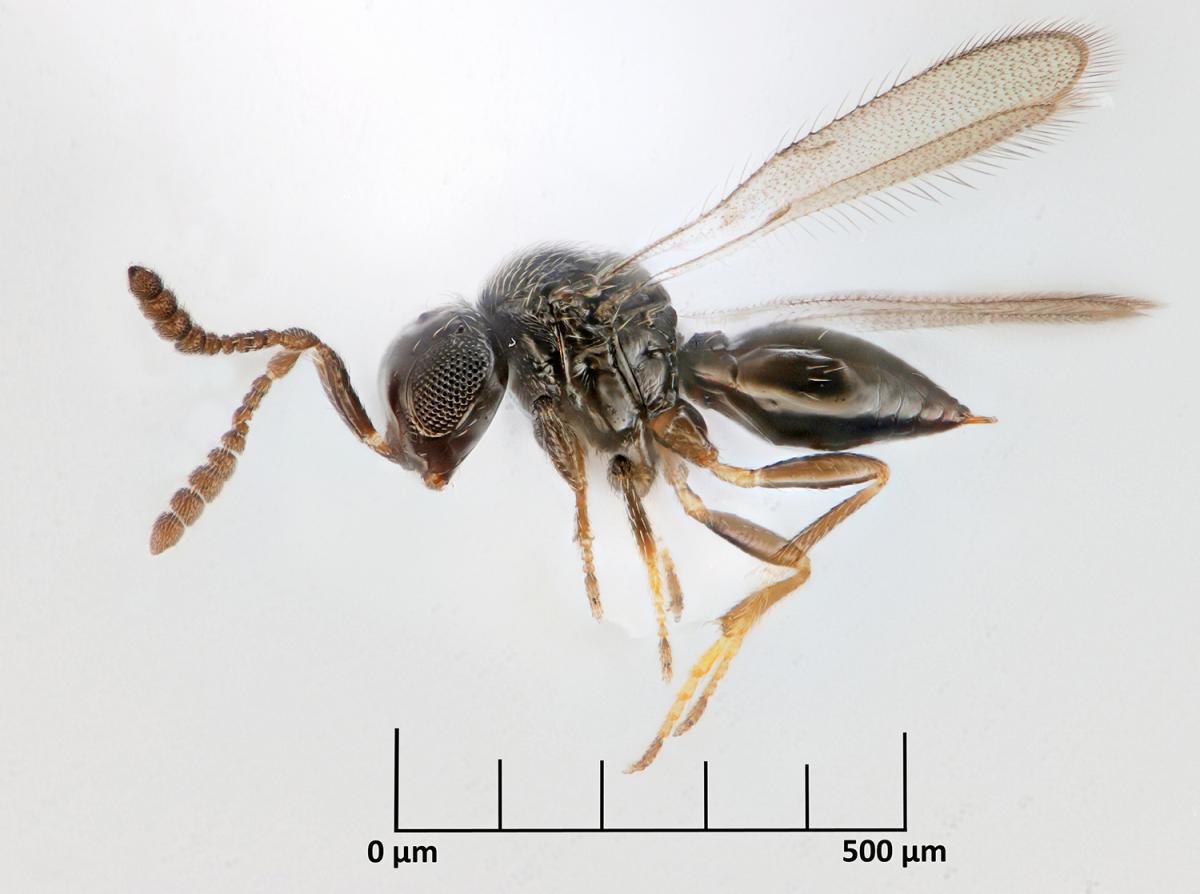
Photo credit: icipe
Coccygidium luteum (Braconidae: Hymenoptera)
a solitary larval parasitoid that has established a new association with fall armyworm in Africa and in some countries in Asia. This parasitoid is already reported from Cameroon, Congo, Democratic Republic of Congo, Ethiopia, Guinea, Kenya, Madagascar, Mauritius, Mozambique, Namibia, Niger, Nigeria, Rodriques Island, Réunion, Senegal, Seychelles, Somalia, South Africa, Tanzania, Uganda and Yemen. It has been recorded to provide up to 8.3% parasitism in Kenya and Tanzania. However, there is a need for a more detailed assessment of its parasitism potential in the various countries in which it has been found. Coccygidium luteum targets larval stages of fall armyworm and may play a key role in complementing the impact of egg parasitoids on fall armyworm egg hatching and on oviposition by fall armyworm adults in diversified maize-cropping systems.
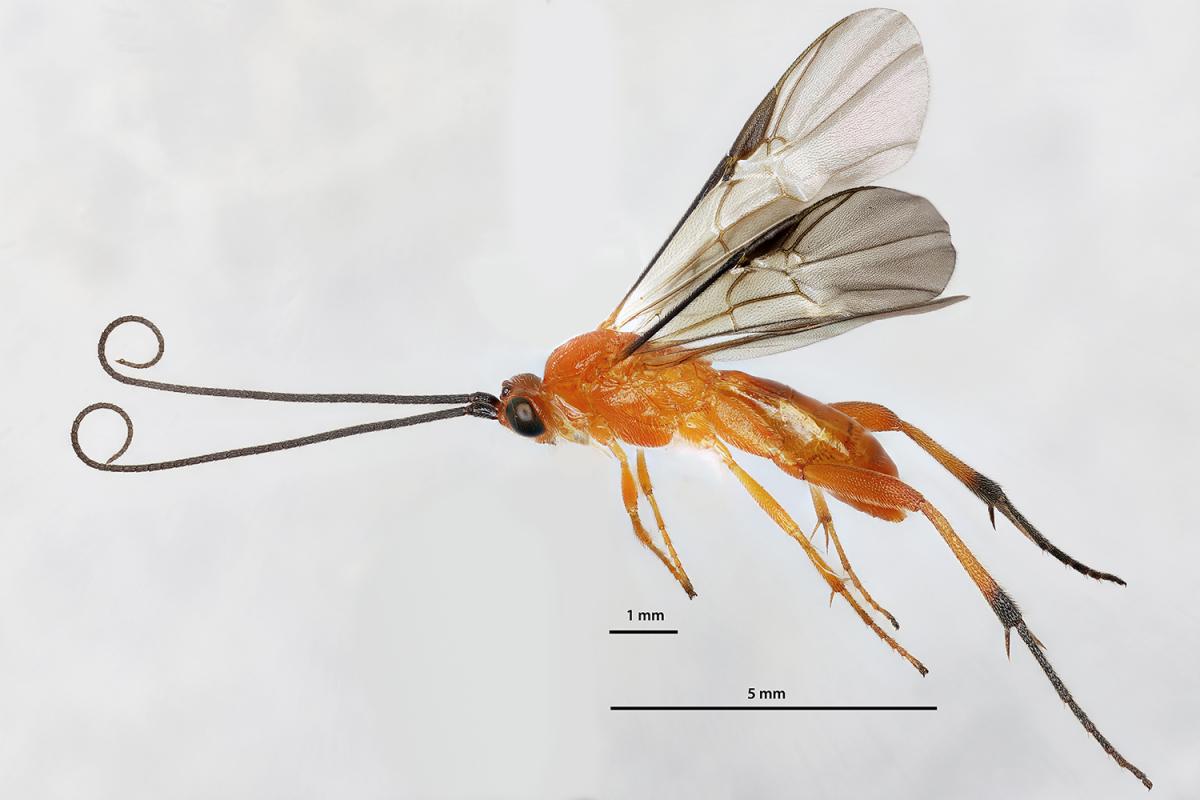
Photo credit: icipe
Chelonus bifoveolatus (Braconidae: Hymenoptera)
Often when you survey an early-stage maize farm, which has been infested by Fall armyworm with egg masses, you are likely to observe something interesting. You might come across large black wasps seated on the FAW egg masses and ovipositing on the eggs that are very small in size compared to the wasp itself.
Don’t be surprised, these are the egg-larval parasitoids, Chelonus bifoveolatus (Braconidae: Hymenoptera), which is being spotlighted today. Females of C. bifoveolatus parasitize fall armyworm by laying their eggs in fall armyworm eggs. The eggs of fall armyworm are not killed, but the parasitized young instars of fall armyworm emerge together with the egg of the parasitoid. As the fall armyworm larva grows, the young grubs of the parasitoid emerge to slowly consume the tissues of its host. Eventually, they kill the fall armyworm before it develops to the third or fourth instar. In Africa, Chelonus bifoveolatus has been recorded from Benin, Burkina Faso, Ghana, Kenya, Senegal, Uganda and Zambia. Apart from Chelonus bifoveolatus, several other related Chelonus species such as C. curvimaculatus, C. intermedius, C. formosanus and C. blackburni have been reported to parasitize fall armyworm in China, India, Kenya, Egypt, Niger and Zambia. Further egg-larval parasitoids, such as Chelonus insularis from the native regions of fall armyworm, are being introduced into Africa within the context of a classical biological control programme.
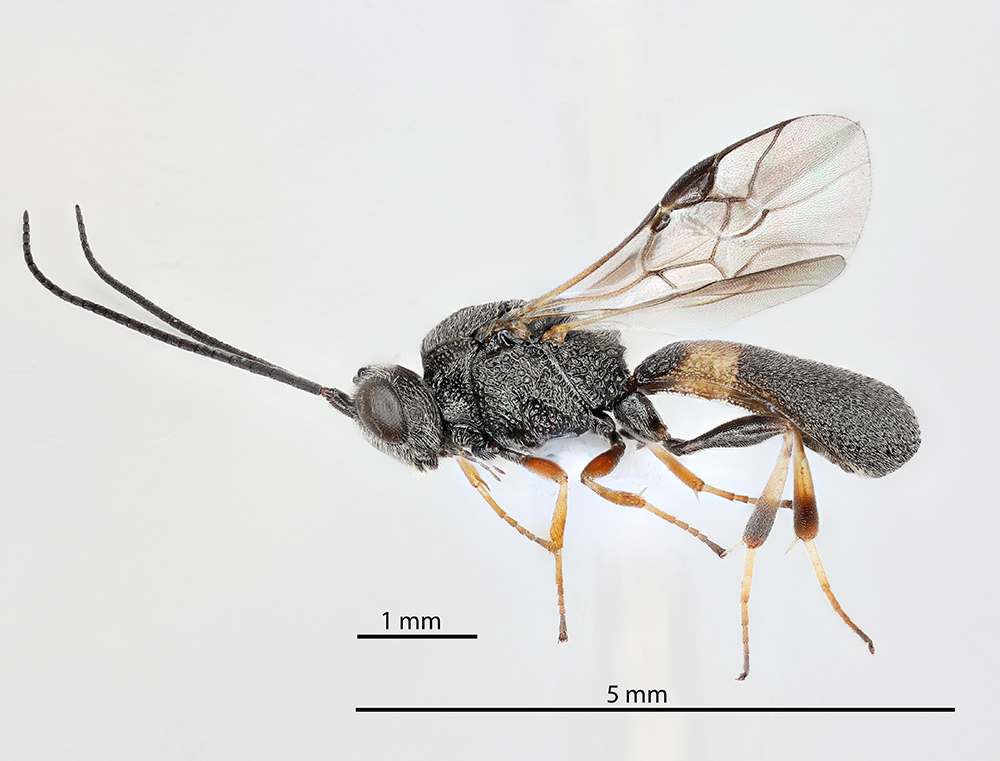
Photo credit: icipe
Trichogramma chilonis (Trichogrammatidae: Hymenoptera)
Egg masses of fall armyworm that are blackened, especially those that are irregularly blackened, are most likely parasitized. Apart from Telenomus remus (Scelionidae: Hymenoptera), which we showcased earlier as our #Fall armyworm natural enemy of the day (2), minute egg parasitoids belonging to the family Trichogrammatidae have been widely observed to parasitize the eggs of fall armyworm in the invaded regions. The egg parasitoid that we are showcasing today is Trichogramma chilonis (Trichogrammatidae: Hymenoptera) which in Kenya has been observed to parasitize up to 25% of fall armyworm egg masses. . Augmentation of Trichogrammatidae in the field can enhance egg parasitism to over 70%.
Apart from Kenya, Trichogramma chilonis has been observed to parasitize fall armyworm in Cameroon, India, China and Nepal. In addition to Trichogramma chilonis, other Trichogrammatids such as Trichogramma pretiosum in Asia, Trichogramma mwanzai in Tanzania and Zambia, and several Trichogramma species in China contribute to parasitism of fall armyworm eggs. One of the key advantages of Trichogrammatids is their amenability to low-cost mass production in factitious host insects such as Rice moths, Corcyra cephalonica (Pyralidae: Hymenoptera). Youth entrepreneurship such as that championed by the Plant Village dream team, supported by the USAID Feed the Future initiative and trained by icipe, can successfully mass rear fall armyworm egg parasitoids for release in smallholder farms in Kenya.
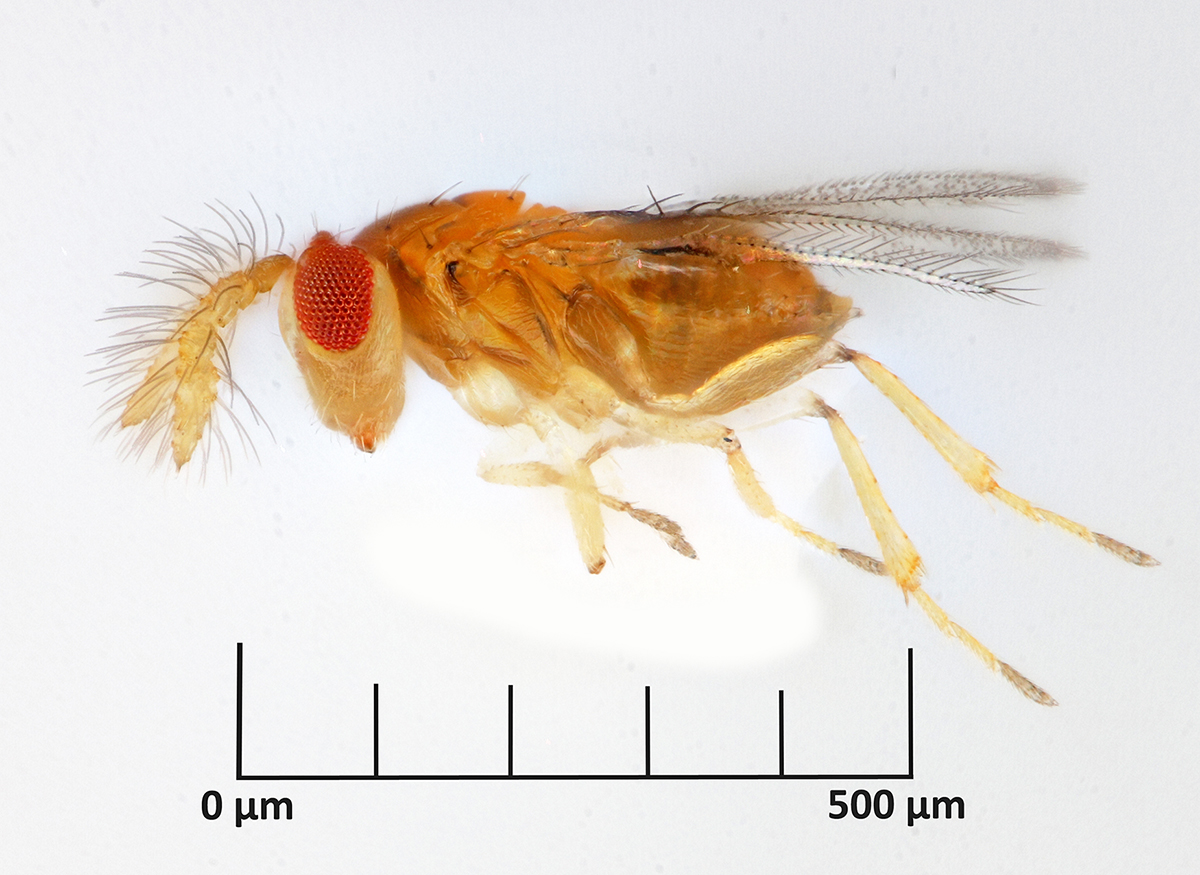
Photo credit: icipe

